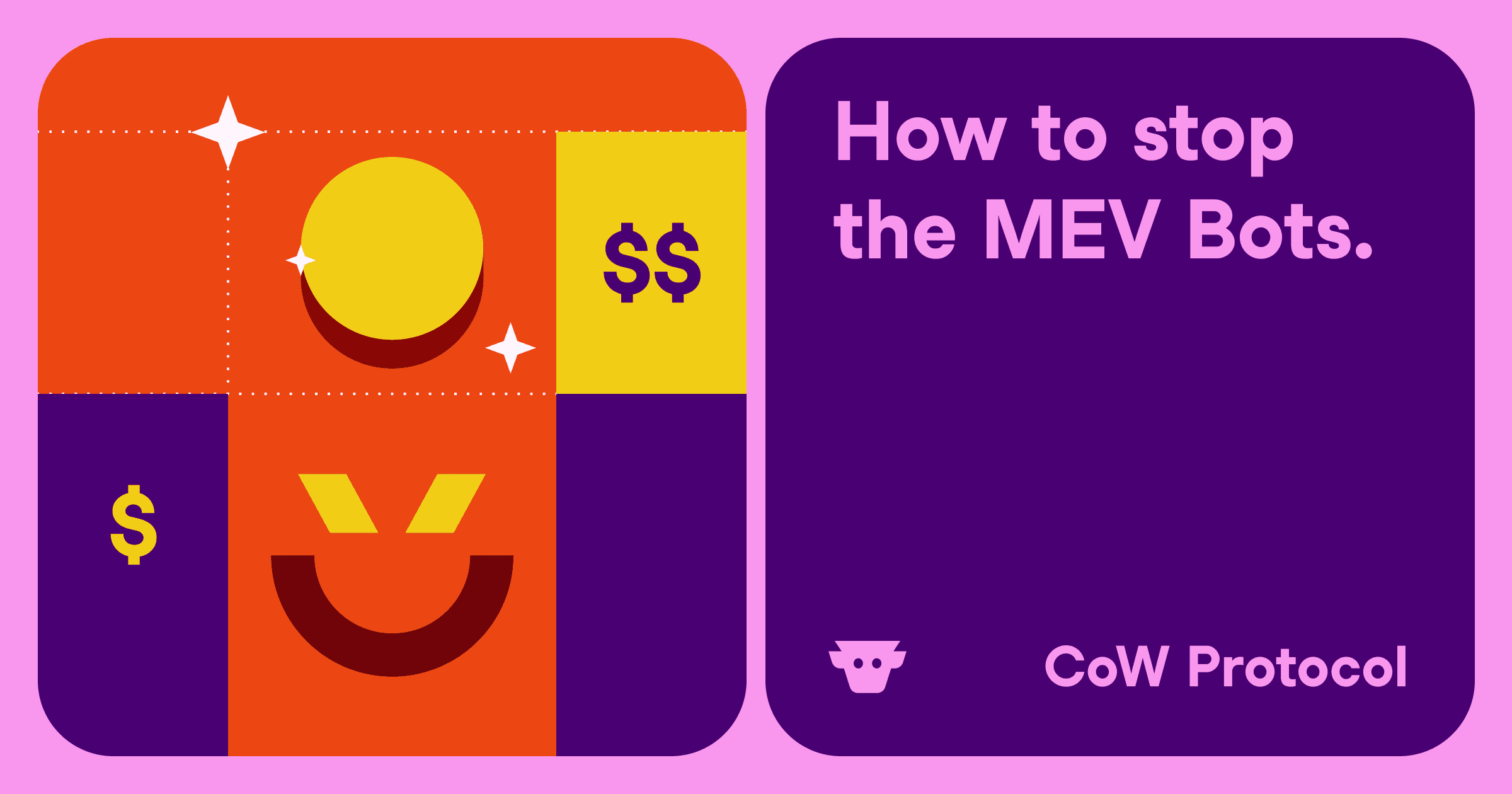Understanding TWAP: How CoW Protocol Reimagines Time-Weighted Average Price Orders
In the fast-paced, often volatile world of decentralized finance (DeFi), executing large trades can feel like navigating a minefield. A single, sizable order can trigger significant price slippage, incur substantial fees, and, perhaps most perilously, expose users to sophisticated MEV (Maximal Extractable Value) attacks. For institutions, DAOs, or even savvy individual traders looking to buy or sell substantial amounts of tokens without disrupting the market, the challenge is immense.
Enter the Time-Weighted Average Price (TWAP) order. A well-established strategy in traditional finance, TWAP aims to mitigate these risks by breaking down a large order into smaller chunks and executing them over a predefined period. While the concept of TWAP is universal, its practical application in DeFi has historically been plagued by the very issues it seeks to solve: high gas costs for multiple transactions, and persistent vulnerability to MEV.
This is where CoW Protocol stands apart. Its unique architecture - built upon batch auctions, competitive solvers, and native MEV protection - doesn't just offer TWAP orders; it fundamentally re-engineers them. TWAP isn't merely a scheduled execution; it's a dynamic, MEV-resistant, and gas-efficient strategy that truly leverages the protocol's core strengths, delivering an execution experience unparalleled in the decentralized space.
In this article, we explore what TWAP orders are, how they work, and how you can make the most of them.
What is TWAP? A Primer on Averaging Your Trades
At its core, a Time-Weighted Average Price (TWAP) order is an execution strategy designed to achieve an average execution price close to the actual time-weighted average price of an asset over a specified period. Instead of executing a single, large market order that could significantly impact the market price, a TWAP order divides the total quantity into smaller, predetermined chunks. These smaller orders are then released and executed at regular intervals throughout the trading session.
That offers a number of benefits, including:
-
Minimizing Market Impact: Large orders can "move the market" and lead to lower returns. By spreading the order out, each smaller trade has less individual impact, leading to a better average price for the overall transaction.
-
Reducing Slippage: Slippage occurs when the execution price deviates from the expected price due to insufficient liquidity or rapid price movements. TWAP helps to smooth out this effect by interacting with liquidity more gently over time.
-
Mitigating Price Manipulation: A large, visible order can be a target for opportunistic traders seeking to front-run or otherwise manipulate prices. TWAP makes the full size of the order less obvious to the market.
-
Achieving a Fairer Average Price: Over a period of volatile trading, a single large order might hit an unfavorable price point. TWAP aims to capture the average price across that period, potentially yielding a more desirable outcome.
-
Simplicity in Execution: Once set, a TWAP order typically runs automatically, freeing the trader from constant monitoring and manual execution of smaller trades.
How Traditional TWAP Works (and its DeFi Challenges):
In traditional financial markets, a TWAP order might break a 100,000 USD order into 10 orders of 10,000 USD, executed every hour over a 10-hour period. While effective in traditional finance, this straightforward approach faces significant hurdles when ported directly to transparent, gas-heavy, and MEV-prone blockchain environments:
-
Prohibitive Gas Costs: Each individual sub-order in a TWAP strategy translates to a separate on-chain transaction. On networks like Ethereum, this means incurring gas fees for every single one of those transactions. For a strategy involving dozens or hundreds of sub-orders, the cumulative gas cost can quickly become exorbitant, eroding any potential savings from better average prices.
-
MEV Vulnerability: The predictable nature of traditional TWAP orders makes them prime targets for MEV. Malicious actors can observe pending TWAP sub-orders in the mempool and execute profitable sandwich attacks (frontrunning and backrunning) or other forms of time-bandit attacks, effectively extracting value from the TWAP executor. This undermines the very purpose of using TWAP for better execution.
-
Execution Uncertainty: Relying on fixed time intervals for execution means sub-orders might hit periods of low liquidity or high network congestion, leading to failed transactions or worse slippage than anticipated.
These limitations make a simple, direct port of traditional TWAP strategies largely impractical and economically unfeasible for most users in DeFi. This is precisely why CoW Protocol's unique architecture offers a transformative solution.
The CoW Protocol Difference: Why TWAP Thrives Here
CoW Protocol doesn't just offer TWAP orders; it redefines them by integrating them into its core mechanisms. The protocol's design inherently mitigates the challenges of traditional DeFi TWAP, making it a powerful and efficient tool for large orders.
Let's delve into how CoW Protocol's distinctive features combine to offer a superior TWAP experience:
Batch Auctions: The Foundation of Fairness
Unlike conventional DEXs that settle orders individually as soon as they hit the network, CoW Protocol aggregates all signed user intents into "batches". All orders within a batch are settled simultaneously at a uniform clearing price.
Impact on TWAP:
-
No Front-Running within Batches: Since all orders in a batch clear at the same price, there's no opportunity for MEV bots to front-run individual trades within that batch. This uniform pricing mechanism immediately eliminates a significant vector for traditional TWAP attacks.
-
Liquidity Aggregation: Orders within a batch can be matched against each other directly (Coincidence of Wants, or CoW), or against external liquidity sources. This aggregation means that individual TWAP sub-orders benefit from the combined liquidity of the entire batch, reducing market impact even further.
Decentralized, Competitive Solvers: The Smart Executors
At the heart of CoW Protocol are "solvers": independent, off-chain entities that compete to find the optimal settlement for each batch of orders. Solvers are highly sophisticated algorithms (and often teams behind them) that leverage advanced routing strategies, access to various liquidity sources (on-chain DEXs, private liquidity, dark pools), and complex optimization techniques. They are incentivized to find the best possible price for users because the solver who proposes the best settlement for the batch wins the right to execute it.
Impact on TWAP:
-
Dynamic, Intelligent Execution, Not Rigid Intervals: This is a crucial distinction. Unlike traditional TWAP which relies on rigid time intervals, CoW Protocol's "TWAP" is an intent for a series of value-optimized executions over time. The solver isn't just executing a small order every 'X' minutes; they are constantly looking for the absolute best way to fulfill parts of your overall TWAP order within the constraints of each batch. They can strategically pause, accelerate, or modify their execution within the limits of your defined TWAP period based on real-time market conditions, CoWs found, and liquidity availability.
-
Leveraging CoWs First: Solvers prioritize finding "Coincidences of Wants" (CoWs) within a batch - where one user wants to buy exactly what another user wants to sell. These CoWs settle without interacting with external AMMs, leading to zero slippage and maximal MEV protection. For a TWAP order, this means parts of your large order can be filled with zero market impact.
-
Access to Diverse Liquidity: Solvers are not limited to a single DEX or a single path. They can route portions of your TWAP order through multiple AMMs, aggregators, private pools, and even off-chain sources (where permissible and trust-minimized) to achieve the best possible price for each sub-execution. This comprehensive search for liquidity minimizes slippage and optimizes the average execution price over the TWAP duration.
-
MEV Internalization (or User Benefit): While solvers could theoretically extract MEV, CoW Protocol's design incentivizes them to internalize it and pass it back to users. If a solver finds an MEV opportunity by reordering or optimizing trades within a batch, they effectively use this "MEV" to achieve a better price for the user, thus increasing their chances of winning the batch competition. The competitive environment among solvers ensures that any MEV extracted is returned to users in the form of improved execution prices.
Native MEV Protection: A Shield Against Extraction
CoW Protocol's design is inherently MEV-resistant. This isn't an add-on feature but a fundamental principle.
Impact on TWAP:
-
Uniform Clearing Price: As mentioned, all orders in a batch settle at the same price, removing the opportunity for front-running individual transactions. For a TWAP order, this means each segment is protected from sandwich attacks.
-
Off-Chain Execution: User orders are signed as "intents" off-chain. Only the final settlement transaction is submitted on-chain by the winning solver. This makes it impossible for bots to see pending individual TWAP sub-orders in the mempool and exploit them, as they are not visible until already included in a settled batch.
-
Solver Competition: The continuous race among solvers to provide the best execution means that any potential MEV they could capture is passed back to users as better prices to win the competition. This "MEV redistribution" is a unique benefit for TWAP orders.
Gasless Orders: Cost-Effective Execution
One of the most significant barriers to traditional TWAP in DeFi is the cumulative gas cost of numerous sub-transactions. CoW Protocol solves this by making user orders gasless. Users simply sign an intent off-chain, and the winning solver covers the gas fees for the on-chain settlement.
Impact on TWAP:
-
Economic Viability: With gas costs absorbed by solvers, TWAP orders become economically viable even for small trade intervals or for users making relatively modest total trades. The user doesn't pay gas for each individual TWAP chunk, eliminating a massive friction point.
-
Reduced Complexity for Users: Users don't need to worry about managing gas for multiple transactions; they set the TWAP parameters, and the protocol handles the underlying execution complexity and costs.
Intent-Centric Design: Focus on What You Want, Not How
CoW Protocol is built on an intent-centric philosophy. Users express what they want to achieve (e.g., "I want to swap 100 ETH for DAI at the best possible price over the next 24 hours"), and the network of solvers figures out the optimal how.
Impact on TWAP:
-
User Simplicity: For a TWAP order, this means users specify the total amount, the desired asset, and the duration. They don't need to worry about the exact interval, order size for each chunk, or gas management. The solvers abstract away this complexity.
-
Optimized Outcomes: The intent-centric design empowers solvers to make dynamic decisions to achieve the best possible average price, adapting to market conditions rather than adhering to a rigid, pre-programmed schedule.
Reimagining TWAP
The combination of features described above is not found in any other single protocol in DeFi. This is why TWAP on CoW Protocol isn't just an implementation; it's a fundamental reimagining of the strategy itself.
No other protocol combines gasless intent-based orders with batch auctions and decentralized, competitive solvers that internalize MEV and bear gas costs. This specific cocktail of design choices transforms TWAP from a predictable, gas-intensive, and MEV-vulnerable strategy into a highly efficient, protected, and economically viable one.
The "time-weighted" aspect shifts from rigidly defined execution intervals to a strategy that optimizes value over a period. Solvers are incentivized to find the best overall average price for the entire TWAP order, leveraging all available liquidity and matching capabilities, rather than just executing at a specific time.
It's not just "TWAP on CoW"; it's "TWAP reimagined by CoW Protocol's architecture." The protocol's inherent MEV protection and competitive solver landscape mean that what users get is not a simple scheduled trade, but a sophisticated, adaptive execution strategy that is constantly working to get them the best deal possible, without suffering from the pitfalls of fragmented liquidity or predatory MEV bots.
Powerful Use Cases for TWAP on CoW Protocol
Given its unique advantages, TWAP on CoW Protocol becomes an invaluable tool for various participants in the DeFi ecosystem:
-
DAOs and Institutions: Large treasury swaps, rebalancing portfolios, or executing significant token sales/purchases can be done with minimal market impact and maximum MEV protection, safeguarding community funds.
-
Dollar-Cost Averaging (DCA) Strategies: Users can set up long-term DCA strategies to buy or sell assets over weeks or months, benefiting from consistent, low-cost, and MEV-protected execution without manual intervention.
-
High-Volume Traders: For traders looking to enter or exit large positions without signaling their intentions or causing significant price swings, CoW Protocol's TWAP offers a stealthy and efficient solution.
-
Fund Managers: Managing large portfolios requires precise execution. TWAP on CoW Protocol provides the tools for systematic rebalancing and asset allocation with enhanced security and efficiency.
-
Arbitrageurs (in specific contexts): While not traditional arbitrage, solvers can use the batching mechanism to execute complex, multi-leg strategies that benefit from price discrepancies without creating further market impact or being front-run, potentially leading to better fills for users.
How to Initiate a TWAP Order on CoW DAO
Despite the complex intelligence operating under the hood, initiating a TWAP order on CoW Protocol is designed to be user-friendly. Users interact with the CoW Swap interface or directly via API.
Typically, the process involves:
-
Connecting your wallet: Standard procedure for any DeFi interaction.
-
Selecting the tokens: Specify the token you want to sell and the token you want to receive.
-
Defining the total amount: Input the total quantity of tokens you wish to swap over time.
-
Setting the duration: Specify the total period over which the TWAP order should execute (e.g., 1 hour, 24 hours, 7 days).
-
Reviewing and signing: The user signs a single, gasless intent for the entire TWAP strategy. The heavy lifting is then passed to the solver network.
From the user's perspective, it's a seamless, gas-free experience where they define the intent, and the protocol's sophisticated backend takes care of the optimal, MEV-protected execution across the specified time frame.
Conclusion
The concept of Time-Weighted Average Price orders has long been a staple in traditional finance, offering a sensible approach to mitigating market impact for large trades. However, its direct translation to the DeFi landscape has been fraught with challenges: the prohibitive cost of gas, the persistent threat of MEV, and the inherent inefficiencies of fragmented liquidity.
CoW Protocol doesn't just offer TWAP orders; it fundamentally redefines them. By leveraging its unique architecture of batch auctions, decentralized solver competition, native MEV protection, and gasless intents, CoW Protocol transforms TWAP from a problematic strategy into a powerful, efficient, and secure tool.
When you execute a TWAP order on CoW Protocol, you're not just scheduling a series of trades; you're leveraging an intelligent network of solvers constantly competing to deliver the best possible average price, shielded from predatory MEV, all without incurring prohibitive gas costs.
This distinctive approach makes CoW Protocol the ideal platform for anyone-from DAOs to institutions to individual power users-seeking to execute large, impactful trades with confidence and optimal outcomes in the decentralized world. Experience the future of execution; experience TWAP on CoW Swap.
Want to dive deeper? Check these articles out below:
-
The Foundations of Decentralized Finance: A Comprehensive Guide to the DeFi Ecosystem
-
Getting Started with DeFi: Your Comprehensive Guide to Decentralized Finance


